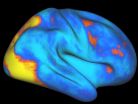(Press-News.org) A recent study looks at why some children put on weight faster than others. The study's goal is to identify factors that can lead to obesity.
Assistant Professor Silje Steinsbekk and Professor Lars Wichstrøm at the Norwegian University of Science and Technology's Department of Psychology are conducting the survey. "We've looked to see if physical activity, television time and appetite traits can explain why some children's body mass index (BMI) increases more than others' do," says Steinsbekk.
At the clinic, most parents have seen the percentile curves on the children's growth chart that show healthy rates of growth and weight gain. The child's weight SHOULD increase, and their bodies should round out as they grow. But how can we prevent this growth curve from becoming too steep?
Difference between children and adults
"BMI is a way to measure our spherical shape -- it indicates how round our bodies are," says Steinsbekk.
A healthy baby is chubby and round. At preschool age, most children slim down until they gradually fill out again, especially around puberty.
"In adults, a BMI over 25 is defined as overweight, and a BMI over 30 is defined as obese," says Steinsbekk. When calculating BMI in children, both age and gender are taken into account, since boys and girls develop slightly differently.
Correlation between eating habits and BMI
The researchers found that the way children related to food and eating was crucial. Physical activity and TV viewing, on the other hand, did not explain why the BMI of some children increased more as compared to others.
"Our study shows that BMI increases more in children where food especially triggers their eating behaviour. Their food intake is controlled more by the sight and smell of food, and less by an inner experience of hunger.
The researchers have not investigated the reasons for this, but previous studies have shown that children who respond more enthusiastically to food, and continue to eat even when they are satiated, also actually eat more.
It is therefore plausible that the reason obesity-promoting appetite traits (triggered by food, does not stop even if full) lead to a steeper BMI curve is because these children eat more than others.
Does the child really look forward to mealtimes? Is the child is very concerned about food? Does the child want to have more food, even if they are full? Does the child eat faster than other children? Does the child resort to comfort eating? The researchers asked the parents questions like these for their survey.
This is part of a long-term study -- Tidlig Trygg i Trondheim (TtiT) -- that looks at children's psychological and psychosocial development over several years. The same children are examined every two years, and in this particular study, the researchers dealt with data from when the children were 4, 6 and 8 years old.
Appetite or obesity first?
What comes first, appetite or overweight? Do the child's eating habits explain the differences in BMI, or is it just the opposite, that children's BMI explains their eating habits? Or in another way of asking -- is it the enthusiasm for food that explains the higher BMI, or is it that kids with a high BMI need more energy and thus consume food more eagerly?
The researchers found that it seems to go both ways.
"Our results show that in relative terms, the BMI of children who are particularly triggered by food increases more when compared with others. But we also found the opposite effect: a high BMI leads to children becoming even more triggered by food over time (at around 6 to 8 years old). As they get older, they are even less able to stop eating when they're full," says Steinsbekk.
Don't force children
Why this is, scientists can't answer yet. More studies are needed.
Steinsbekk has worked with children with obesity for many years. She points out that many of these children find it difficult to know when they are full and therefore need their parents' help to regulate their food intake (for example, one serving at dinner). On the other hand, we know that in order to promote the development of normal eating behaviour, it is important for children to decide how much they want to eat. If children are pushed to eat everything on their plates, they may stop relying on their own body's signals, and eat until the parents are happy.
INFORMATION:
Reference: Predictors of Change in BMI From the Age of 4 to 8, Silje Steinsbekk and Lars Wichstrøm. J. Pediatr. Psychol. (2015) doi: 10.1093/jpepsy/jsv052
PHOENIX, Ariz. -- July 15, 2015 -- Researchers at the Translational Genomics Research Institute (TGen) have identified a genetic mutation associated with the appearance of premature aging and severe loss of body fat in children.
TGen's Center for Rare Childhood Disorders found that the appearance of premature aging, a neonatal form of Progeroid syndrome, in a 3-year-old girl was caused by a mutation in the gene CAV1, according to a study published today in the scientific journal PLOS ONE.
The Center for Rare Childhood Disorders was established in 2010 to examine the ...
15 July, 2015, Hoffman Estates, IL - Sodium intake in the U.S. exceeds dietary recommendations and has been identified as a nutrient of public health concern in the Scientific Report of the 2015 Dietary Guidelines Advisory Committee1 due to its link to increased risk of hypertension, heart disease, and stroke2. While authorities continue to call for people to lower their sodium intake, much progress still needs to be made and multiple solutions are necessary to meet the recommended maximum intake of 2,300 milligrams per day for the general population and 1,500 milligrams ...
Mainz/Barcelona. A team of scientists at the Max Planck Institute for Polymer Research (MPI-P) discovered that electrical conduction in graphene on the picosecond timescale - a picosecond being one thousandth of one billionth of a second - is governed by the same basic laws that describe the thermal properties of gases. This much simpler thermodynamic approach to the electrical conduction in graphene will allow scientists and engineers not only to better understand but also to improve the performance of graphene-based nanoelectronic devices.
The researchers found that ...
Researchers at Harvard University and the University of California, San Diego, have developed a new user-friendly resource to accompany the powerful gene editing tool called CRISPR/Cas9, which has been widely adopted to make precise, targeted changes in DNA. This breakthrough has the potential to facilitate new discoveries in gene therapies and basic genetics research. The research was published in the July 13 issue of Nature Methods.
The study describes an approach to simplify a laborious part of the gene editing process using the CRISPR/Cas9 system: choosing the best ...
Sudden unexpected death in epilepsy (SUDEP) is becoming increasingly recognized as a very real and devastating problem in which impaired breathing is thought to play a critical role. Researchers believe breathing may be impaired during and after seizures, without the patient's knowledge.
By using electrical stimulation to activate the amygdala, a group of University of Iowa researchers has identified areas of the human brain in which breathing is controlled and, in some cases, impaired, providing an important insight into SUDEP.
Their study - which marks the first time ...
NASA's Aqua satellite flew over Typhoon Halola in the northwestern Pacific Ocean and captured temperature data on the storm. Satellite data showed that wind shear is affecting the stubborn storm.
NASA's Aqua satellite passed over Halola on July 14 at 20:20 UTC (4:20 p.m. EDT/1:20 p.m. PDT) infrared data from the Atmospheric Infrared Sounder or AIRS instrument that also flies aboard Aqua showed cloud top temperatures were as cold as -63F/-52C. Cloud top temperatures that cold have the ability to drop heavy rainfall.
The Joint Typhoon Warning Center noted that animated ...
High school students who take part in pre-college programs that focus on science are much more likely to pursue higher education and, eventually, careers in science, technology, engineering and medicine - the STEM disciplines.
In a paper published in the Journal of Higher Education Outreach and Engagement, Michigan State University researchers from the National Superconducting Cyclotron Laboratory, the Joint Institute for Nuclear Astrophysics and the College of Education used an MSU program as a case study for why these programs are key to training tomorrow's generation ...
PHILADELPHIA, PA - July 15, 2015 - Obstructive Sleep Apnea (OSA) remains under-recognized in hospitalized patients, despite being associated with cardiovascular complications and sudden death. A multi-disciplinary group of researchers and physicians at Thomas Jefferson University and Hospitals have created a clinical pathway, or screening process, to identify the disorder in higher-risk, hospitalized patients and recently published the results in the Journal of Clinical Sleep Medicine.
"The results showed that our screening process identified sleep disordered breathing ...
New York, NY, July 15, 2015--Researchers at Columbia University Medical Center (CUMC) have found that key parts of the human brain network that give us the power to control and redirect our attention--a core cognitive ability--may be unique to humans. The research, which was published in the July 13 online edition of the Proceedings of the National Academy of Sciences, suggests that the network may have evolved in response to increasingly complex social cues.
"The human brain is powerful, but even it cannot make sense of the entire sum of stimuli that bombard our senses," ...
ROSEMONT, Ill.--Patients who received rehabilitation instructions via video teleconference, or "telerehabilitation," following total knee replacement (TKR) surgery had comparable outcomes to patients who received in-person physical therapy, according to a study appearing in the July 15 issue of The Journal of Bone & Joint Surgery (JBJS).
"This study is the first to provide strong evidence for use of telerehabilitation as an alternative to conventional face-to-face care following total knee replacement surgery," said Hélène Moffet, PhD, lead study author, physical ...



